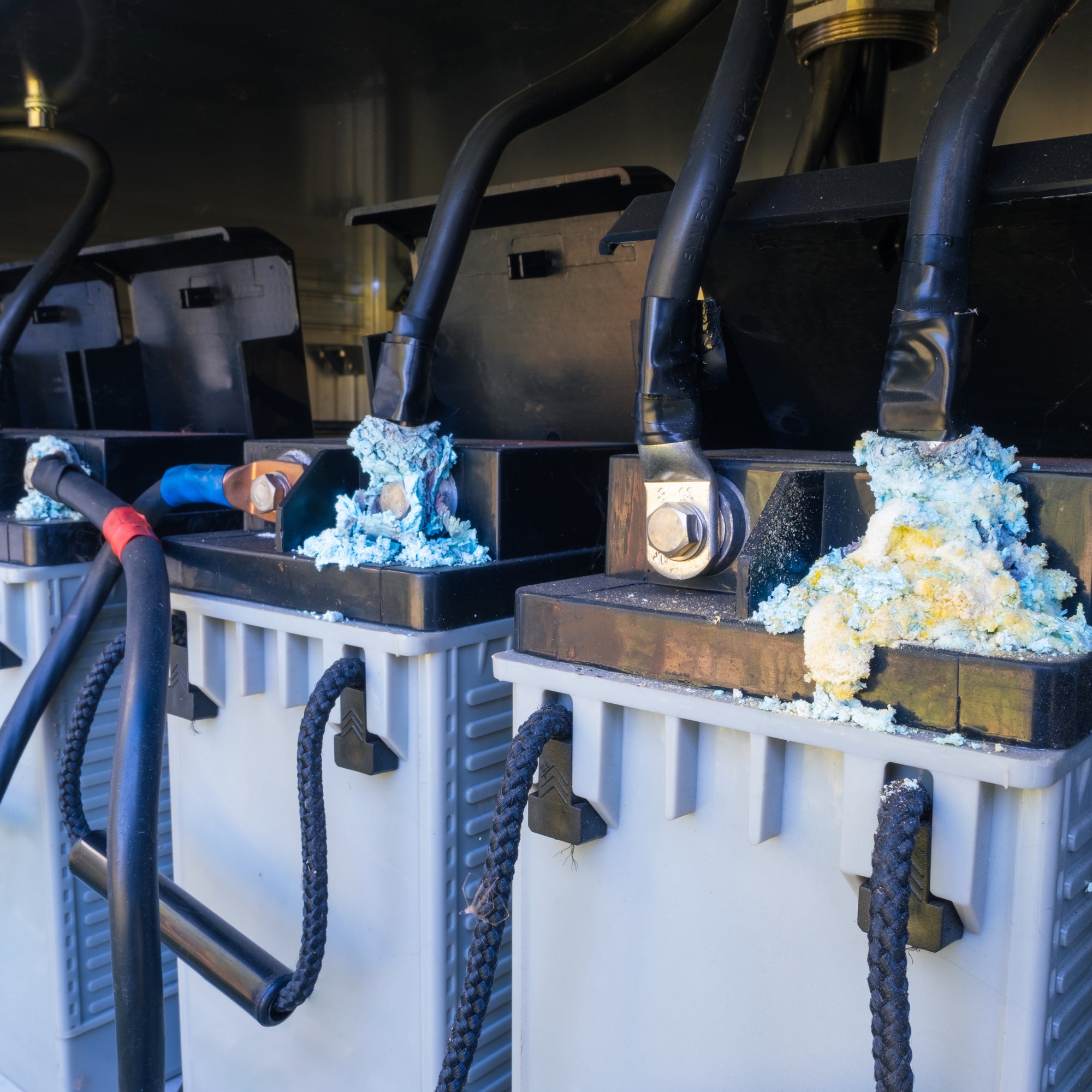Everything you need to know about battery corrosion – where it comes from, how to get rid of corrosion on your battery terminals and other electrical contacts, and most importantly, how to prevent battery corrosion from coming back.
Yesterday, we met with a company who specializes in web site search engine optimization. They did an analysis of subjects (keywords) that were important to customers like ours. Interestingly, "how to clean battery corrosion", “battery terminal corrosion” and “car battery corrosion” were all at the top of the list. They wondered why we weren't advertising those keywords.
On our old website, we actually had quite a bit of information on how to remove battery corrosion. But I guess we figured that for our customers car battery corrosion had gone the way of the dodo or smallpox (i.e. entirely cured), because anyone who knows CorrosionX, does not have an issue with battery and terminal corrosion.
What causes battery corrosion?
Battery corrosion is typically caused by a combination of factors, including overcharging, exposure to high temperatures, using old or damaged batteries and exposure to moisture (especially saltwater). When the battery is overcharged, it can lead to the electrolyte boiling and leaking out of the battery, which then reacts with the metal terminals. That’s what causes the typical blue/green corrosion at the battery posts.
Why is battery corrosion harmful?
Battery corrosion can be harmful for several reasons. Firstly, it can cause poor electrical conductivity between the battery and the device, leading to issues such as slow charging or a complete loss of power. Additionally, the corrosion can spread to other parts of the device, causing further damage.
How to prevent battery corrosion?
Step 1: KEEP AEROSOL CANS AWAY FROM BATTERY TERMINALS TO PREVENT ARCHING. Spray your battery terminals, battery cables, battery contacts and springs, blades on your plugs and shore power connectors with CorrosionX. If you don’t have battery corrosion now, spray CorrosionX on contacts about once a year and you’ll probably never have to worry about this issue.
If battery corrosion is present, just spray the affected area with CorrosionX, and within moments, CorrosionX will penetrate existing corrosion, will bond to the underlaying clean metal surface, and gently lift every bit of the corrosion (and whatever electrolytes started the problem in the first place) off and away from the clean metal surface underneath.
 Step 2: Who am I kidding? There is no Step 2. CorrosionX does all the work.
Step 2: Who am I kidding? There is no Step 2. CorrosionX does all the work.
However, should you wish to facilitate the speed of removal, you could brush the corroded area with an old toothbrush or something like that (be sure to throw it away when you're done), or I guess you could wipe off the separated corrosion with a paper towel or old rag. If it’s something small like a VHF battery, watch battery, SCUBA computer battery or something like that, which is corroding due to saltwater exposure, just dab a little CorrosionX on there with a Q-tip, and that will clean it right up.
In short, just wait 20 second or so, and wipe all the corrosion away. That’s it.
Going forward, one light spray of CorrosionX about once a year will keep those battery terminals, battery cable connections, shore power cable connections, etc. in perfect condition without a trace of battery corrosion.
What about a slurry of baking soda or Coca Cola you might ask. Do those work? When I was a kid, I used both methods. Vinegar and lemon juice can also work too to remove battery corrosion. However, all of these methods employ low pH (base) to neutralize the high pH (acid). The problem is these old-fashioned remedies just remove the corrosion – they do nothing to prevent the corrosion from returning. So save yourself a lot of time, effort, exasperation and expense, and simply battery terminals and socket with CorrosionX once a year.
How to prevent battery corrosion?
There are several steps you can take to prevent battery corrosion. Firstly, make sure to use the correct type and size of battery for your device. Avoid overcharging the battery and store it in a cool, dry place away from direct sunlight. Especially if you’re using electronics in a marine environment (examples include handheld VHF, scuba computer, battery powered watch, and pretty much EVERY electrical connection on a boat), regularly inspect the battery terminals and connections for any signs of corrosion and clean them with your CorrosionX when necessary – this is literally a case of pennies protecting dollars.
By understanding the causes of battery corrosion and taking preventative measures, you can prolong the life of your electronic devices and ensure they continue to function properly.



